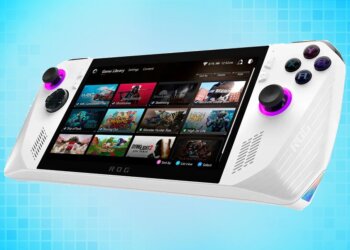After the exciting debut of the Nintendo Switch 2, there’s been a buzz about the technical specs that we’re starting to uncover. A particularly interesting aspect is the console’s requirement for a new type of MicroSD, known as MicroSD Express, deviating from the previous model. Here’s the catch though—these cards come with a hefty price tag. Currently, on a per-gigabyte basis, they are more expensive than many modern SSDs, coming in at 20 to 25 cents per GB. In contrast, you can snag some SSDs for as cheap as 5 to 6 cents per GB. This price hike is partly due to their NVMe and PCIe 3.0 support, tech elements that are typically seen in the more advanced M.2 SSDs.
Let’s talk numbers—Sandisk’s MicroSD Express cards are priced at $49.99 for just 128GB, while the 256GB version goes for $64.99. These cards flaunt impressive performance metrics, offering speeds up to 880 MB/s read and 480 MB/s write, with sustained write speeds at 100 MB/s.
Lexar, on the other hand, is stepping up with even larger capacities, going as high as 1TB. But, prepare yourself for a shock at checkout. The prices for these new standards are predictably steep.
Case in point: Lexar’s Play Pro 1TB MicroSD Express card is priced at an eye-watering $199.99, with the 512GB variant at $99.99, and the 256GB card costing $49.99. The performance here is nothing to scoff at, with read speeds reaching up to 900 MB/s and write speeds peaking at 600 MB/s.
When we break it down, Sandisk’s 128GB card costs around $0.39 per gigabyte, with the 256GB version at $0.25 per gigabyte. Lexar seems to be more competitive here, offering all three storage variants at a standardized cost of $0.20 per gigabyte, alongside some superior specs.
Why Storage Will Be Essential for the Switch 2 Experience
Although the Switch 2 will come with 256GB of storage as standard, it’s not as straightforward as it sounds. Even if you own the physical game cartridge, you might still need to download the entire game onto the console. The cartridge essentially acts as a physical license, which Nintendo terms a "Game-Key Card." This move seems like an effort to cut down on cartridge production costs, all while NAND storage prices are on the upswing.
Take for instance the scenario with the Street Fighter 6 cartridge—it’s a 50GB download required immediately upon inserting the Game-Key Card. Before long, the 256GB that comes with the console starts looking pretty limited. This could mean shelling out extra for those pricey new MicroSD cards to expand your storage. Otherwise, you might find yourself in the exasperating situation of constantly juggling downloads and system space each time you switch games.
Decoding the Switch 2’s MicroSD Express Standard
At first glance, differentiating between a standard MicroSD and a MicroSD Express card might not be easy, potentially leading to confusion. However, the technical upgrades set them apart from the UHS-I cards that the original Switch used.
According to the SD Association’s classifications, MicroSD Express cards fall into one of four categories: Class 150, Class 300, Class 450, and Class 600. These numbers denote the minimum read/write speeds offered in MB/s. Notably, an Express card has significantly more pins—16 or 17 compared to the eight on older models.
Benefiting from NVMe and PCIe 3.0 interfaces, these cards can, in theory, reach speeds as high as 2GB/s with a PCIe 4.0 interface. For enthusiasts keen to dive into the technical details, you can find extensive analyses on sites like AnandTech.
But hold your horses—despite these advancements, we don’t know quite yet if the Switch 2 will tap into these peak speeds. Currently, no announced MicroSD Express card has reached its theoretical speed capabilities.
The future looks promising though. Joey Lopez, Director of Brand Marketing at Lexar, is optimistic, saying, “The new microSD Express standard allows us to deliver unparalleled performance in that compact form.” Lexar aims to provide gamers with top-notch memory cards that are ready for the next era of handheld gaming.
The gap between the top UHS-I MicroSD cards and the fastest potential MicroSD Express cards is significant. Right now, Lexar’s Play Pro MicroSDXC Express card is leading the charge in speed, though these figures will truly be put to the test when both the Switch 2 and these new cards get into the hands of gamers. For now, stick around to see our hands-on impressions of the Nintendo Switch 2.










![[PS5] Review of ELDRADOR CREATURES Shadowfall](https://www.pixbulletin.com/wp-content/uploads/2025/03/PS5-Review-of-ELDRADOR-CREATURES-Shadowfall.avif.avif)






























